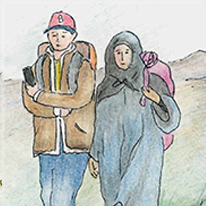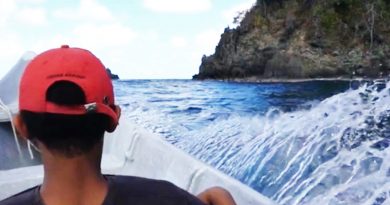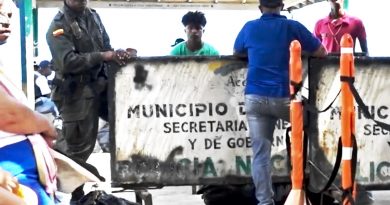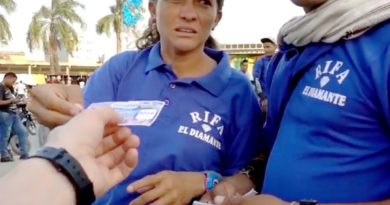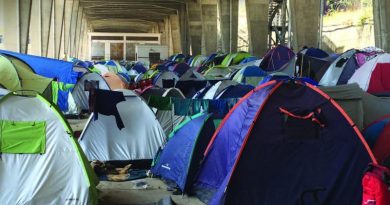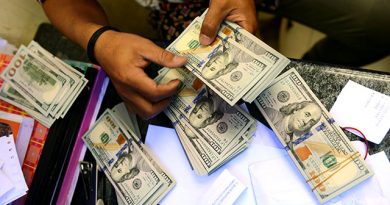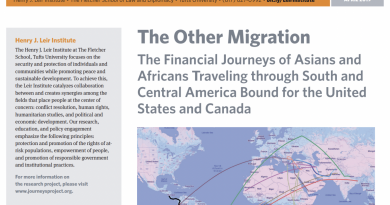India
The Other Migration, Part 1: Who and Why
As countries across the globe crack down on immigration, migrants and refugees are forced to uncover new travel routes in search of safety and stability. The Other Migration examines the journey of migrants from Africa and Asia as they travel across the world to South America and up through Central America. Part one of this three-part series examines who is traveling on this migration route and why.
Read moreThe Other Migration, Part 2: Journey Through the Darién Gap
Migrants and refugees who have fled to South America may attempt to travel up through Central America in search of safety and stability in the US or Canada. This journey involves crossing one of the world’s most dangerous jungles: The Darién Gap, along the border of Colombia and Panama. In part two of this three-part series, learn about this perilous leg of the migration journey.
Read moreThe Other Migration, Part 3: Financial Journey of Refugees
Money can reveal new and important aspects of the migration journey. In part three of this three-part series, learn what finances can tell us as migrants and refugees save, spend, and try to maintain money traveling from around the world, to South America, and up through Central America in a perilous migration route.
Read moreRetaining, Changing, and Surrendering Hegemonic Masculinities
By Subin Mulmi, under the supervision of Kim Wilson. Transatlantic migration from South Asia is a long, arduous, and expensive journey but each year many South Asians risk their lives to reach the supposed dreamland of the United States. A large majority of the South Asians that I met during our re-search in 2018 in Costa Rica were men, prompting a focus on how men experienced long-distance migration.
Read moreYou and I Are Not Friends: The Challenges of Ethnographic Study in the Migration Field
By Padmini Baruah, under the supervision of Kim Wilson. Transnational migration has been one of the most talked-about phenomena of the past decade. With prolonged armed conflict, economic crises, and climate change affecting different parts of the world adversely, it is not a surprise that an estimated 258 million people live in a country that is not the country of their birth.1 Much news has been generated on this subject, and multiple studies have focused on the macro aspects of this issue. However, equally vital is not losing sight of the fact that while broad patterns and theories can explain the macrophenomenon of transnational migration, each migrant’s story is ultimately a subjective and entirely personal lived experience. The powerful contribution of the individual narrative as well as of ethnographic observations to academic studies in this field cannot be overlooked.
Read moreTracing the Financial Journeys of Nepali Migrants
By Subin Mulmi, under the supervision of Kim Wilson. The 2015 earthquake in Nepal resulted in the deaths of 8,970 people with 22,302 injured. Several reports have estimated that more than one million houses were destroyed, affecting the lives of six million people. Only a handful of families have been relocated to safer places. Even before the quake, the country was reeling from the effects of the decade-long civil war that claimed the lives of 13,236 people and led to the disappearance of thousands more. In June 2009, the Nepal IDP Working Group reported that up to 70,000 people displaced by the conflict had not yet found durable housing. They remained unable to return home, integrate locally, or resettle elsewhere.
Read moreWhat Can Hotels Teach Us about Smuggling?
By Maria Teresa Nagel, under the supervision of Kim Wilson. There is limited research describing the smuggling industry and its actors, particularly in Central America. Our study hopes to address this knowledge gap by disclosing how human smugglers lodge their clients and the role hotels play in the smuggling ecosystem.
Read more
